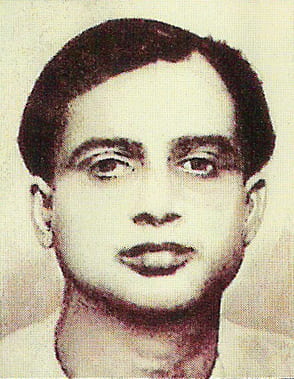Selective Discographies
(1902-47)
List of 78 rpm recordings
Megaphone Records
1a JNG 390 OMC 4392 Durgaa Dukhhaarinee (raag Durgaa) – Tulsee Lahidee (Bengali)
1b OMC 4393 Tilak Dil ke (raag Tilak kaamod mishra) – Tulsee Lahidee
2a JNG 1066 MOPH 574 Ban ban dhoodan jaaun (Sarang) (Hindi)
2b MOPH 575 Kaun karat toree binatee (Bageshri)
3a JNG 1069 OMC 10030-1 Tum jogee mohan pyaare (Bhairav) (Hindi)
3b OMC 10031-1 Shyaam sundarki sundar murliyaa (Puriya) (Hindi)
EP (Bengali) Megaphone EP (EJNG.1018 = 7TJE.17227 / 7TJE.17228)
Oi Elo Phagun Elo Holi
Oli Gunjori Koye Jago
Rimi Jhimi Rimi Jhimi Boroshe (Mian Malhar)
Jochhona Bichhano Dharatal (Kedara) [words : Tulsi Lahiri]
Acknowledgements
I am grateful for help with the above to Kalyan Bhuta (Mumbai), & to Alain Danielou, A Catalogue of Recorded Classical and Traditional Indian Music (Paris: Unesco, 1952). The photograph, biographical information and details about several of the EPs comes from Sanjay Ghosh.
Biographical information
Sanjay Ghosh
Jnanendra Prosad Goswami, also known as Jnan Gosain, was the son of esraj player Bipin Chandra of Vishnupur gharana. After his father’s death, he moved to Bahrampur and trained under Radhika Prosad Goswami (Betia Gharana), principal of Maharaja Manindra Nandi Sangeet Vishwavidyalaya. This was between 1910 and 1925. Thereafter he is supposed to have trained for short periods under Pt Vishnu Digambar Paluskar and Girija Shankar Chakravarty. He had been praised by Faiyaz Khan Saheb, Abdul Karim Khan and Omkarnath Thakur and recorded in the 1930s and 40s.
On hearing his recital at Ghosh Badi of Paturiaghat, Faiyaz Khan Saheb had exclaimed, ‘Jnan tumhara kya awaaz’. Hearsay accpuntsc claim that Ustad Faiyaz Khan Saheb, on hearing his early 78s, went to visit him in his native village.
Some people say it was these recordings that persuaded Faiyaz Khan Saheb to record in the 78 rpm format for the first time in 1934 (issued in March 1935).
Last updated on 9 May 2006

